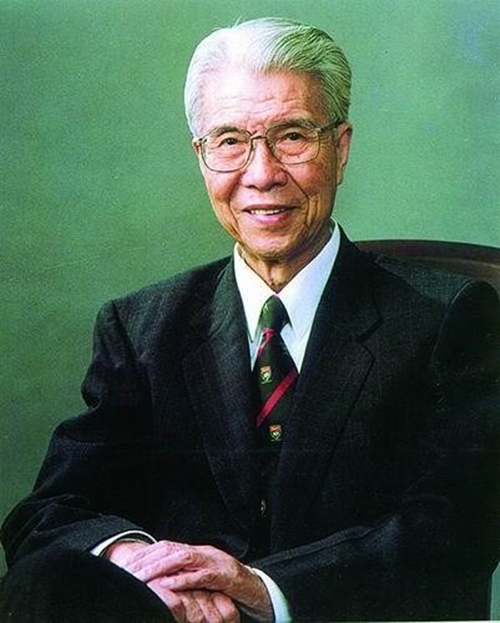Zhang Jinzhe: 'A bosom buddy' of his young patients

Zhang Jinzhe [Photo/Beijing Children's Hospital]
Zhang Jinzhe has been practicing medicine for 70 years and serves as the chief physician at Beijing Children's Hospital affiliated with Capital Medical University. He has performed surgeries on over 10,000 children and has received the highest international accolade in pediatric surgery: the "Denis Browne" Gold Medal.
However, Zhang has never seen himself as a lifesaving hero. Instead, he views his role as fighting alongside his patients against their diseases. This philosophy allows him to approach every child with a father's compassion. Whenever he sees a patient, he warms his hands and the stethoscope before touching the child. These considerate gestures have fostered deep bonds, making Zhang and his young patients "bosom friends".
Innovating surgery on his own child
Before and after the establishment of the People's Republic of China, pediatric surgery in the country was virtually undeveloped.
In 1948, infant subcutaneous gangrene spread widely across the nation. Newborns infected with it would develop abscesses that spread across their backs within two to three days, nearly always resulting in death.
Zhang had a bold idea: "What if we could cut open the skin and drain the pus and blood before the infection spreads extensively?" At the time, this notion was considered radical. Neither doctors nor parents were willing to take such a risk on infants.
During this period, Zhang's three-day-old second daughter also contracted subcutaneous gangrene. Her fate hinged on his decision. Ultimately, he persuaded his wife to allow him to operate on their daughter.
"If we don't try, we can only wait for death. Trying gives us hope." He made an incision, drained the pus and blood, and stitched the wound. Anxious and uncertain, Zhang waited, torn between his roles as a father and a doctor. Luckily, the surgery was successful, showcasing Zhang's decisiveness and medical prowess in saving his daughter's life.
This became China's first successful case of an infant surviving subcutaneous gangrene due to surgery, leading to the widespread adoption of Zhang's "early incision" method, which saved countless lives. From 1950 onwards, the mortality rate from infant subcutaneous gangrene in China dropped from nearly 100% to below 5%.
Thus began Zhang's formal journey into pediatric surgery.
The "double-headed baby"
In 1950, through the efforts of Zhang and his colleagues, China's first pediatric surgery department was established at Peking University Hospital. This was a journey of exploration, amid a severe lack of talent, technology and equipment in China. Despite the West's advancements in anesthesia and intubation, they were inaccessible to Zhang and his peers.
The pediatric surgery department, with just five beds, faced skepticism. For three to four months, no patients came — until a turning point emerged.
One day, while tidying a room, a colleague of Zhang heard crying from a waste bucket. Inside was an abandoned newborn who appeared to have two "heads". Zhang discovered that the strange appearance had scared and overwhelmed the parents and perplexed the doctors. Since the baby hadn't shown signs of breathing, the parents presumed he was dead and discarded him.
"This is meningocele, not two heads. We just need to operate and remove it," Zhang clarified. He performed the surgery smoothly, and the baby stayed in the hospital, becoming the department's first patient.
A week later, the baby's health metrics were normal. The sensational story of the "double-headed baby" spread throughout Beijing.
Zhang focused on treating a few manageable diseases, gradually forming the department's focus on "eight key diseases". Severe cases required stabilization before surgery.
A year later, the pediatric surgery department's overall mortality rate dropped from 30% to 9% (including emergencies), still higher than the adult surgery rate of the time. In the second year, it fell to 5%, enhancing the department's reputation.
The hands-on innovator
In 1955, with the establishment of Beijing Children's Hospital, Zhang was appointed director of pediatric surgery. The new department had to build everything from scratch, from dressings and instruments to sterile measures in the operating rooms.
At the age of 35, Zhang had to grow professionally while also training talent, making him exceptionally busy.
For example, gauze sheds lint when cut, so the edges need to be folded in, something pediatric doctors didn't know. Zhang personally taught them not only how to fold gauze but also how to fold clothes, wash hands and prepare surgical packs.
"The best indicator of a child's illness is their cry; cure the illness, and they will laugh," Zhang often said. He carried small toys in his coat pocket to entertain and calm crying children, seizing the opportunity to perform examinations.
To improve diagnosis and treatment, Zhang developed various examination methods, including comparative techniques, the three-layer examination method, and reaching behind the mother to palpate an infant's abdomen. For acute conditions, he insisted on three abdominal palpations: at the initial visit, post-lab tests, and before admission (or after sleep), to ensure accuracy.
Over his 70-year career, Zhang has performed over 10,000 surgeries and invented or improved more than 50 surgical instruments and techniques. For instance, he developed methods to perform tracheal intubation with minimal equipment and created tools like "Zhang's clamp" for treating Hirschsprung's disease, "Zhang's membrane" for non-invasive anorectal surgery, and "Zhang's valve" to prevent reflux in biliary reconstruction. His innovations made China a pioneer in certain pediatric surgeries.
Zhang dislikes the term "invention", believing that true inventions require patents, while his equipment and methods are "patent-free and welcome to be replicated".
In Zhang's view, regardless of skill level, a doctor is always a service provider. They must consider patients' treatment, prognosis, and economic capacity, using the simplest methods and cheapest medications to cure them. Additionally, doctors should be patient and provide thorough explanations.








